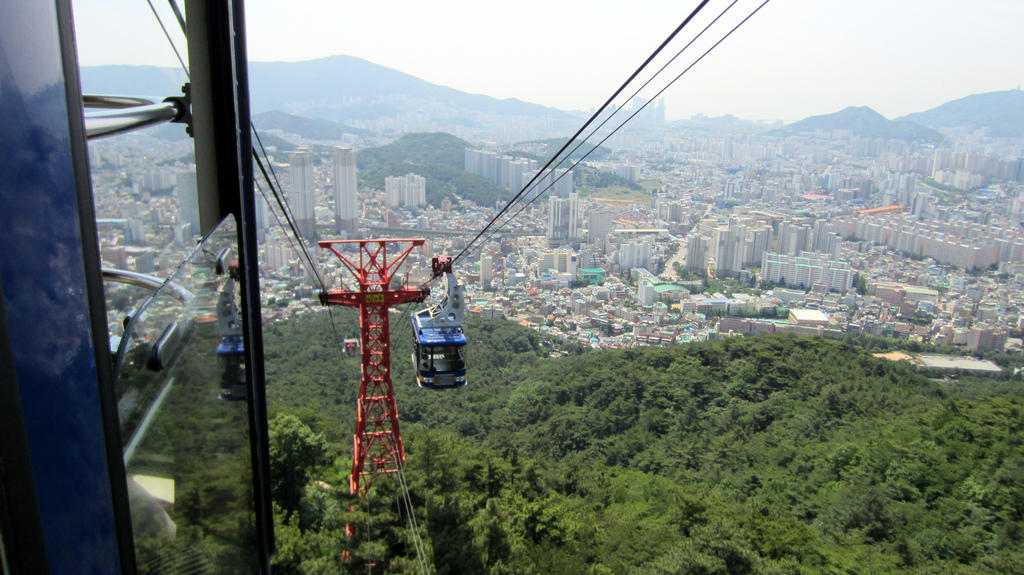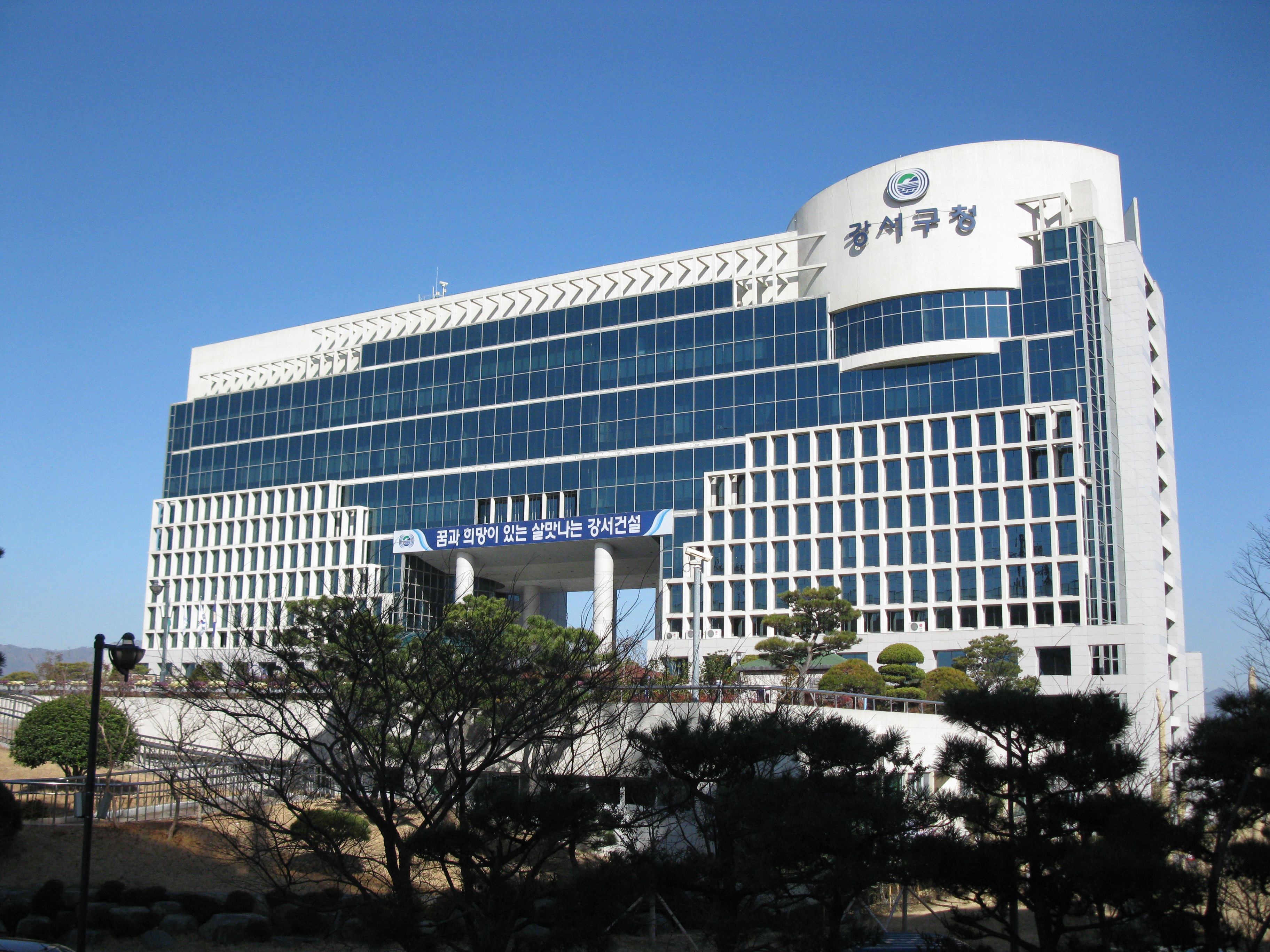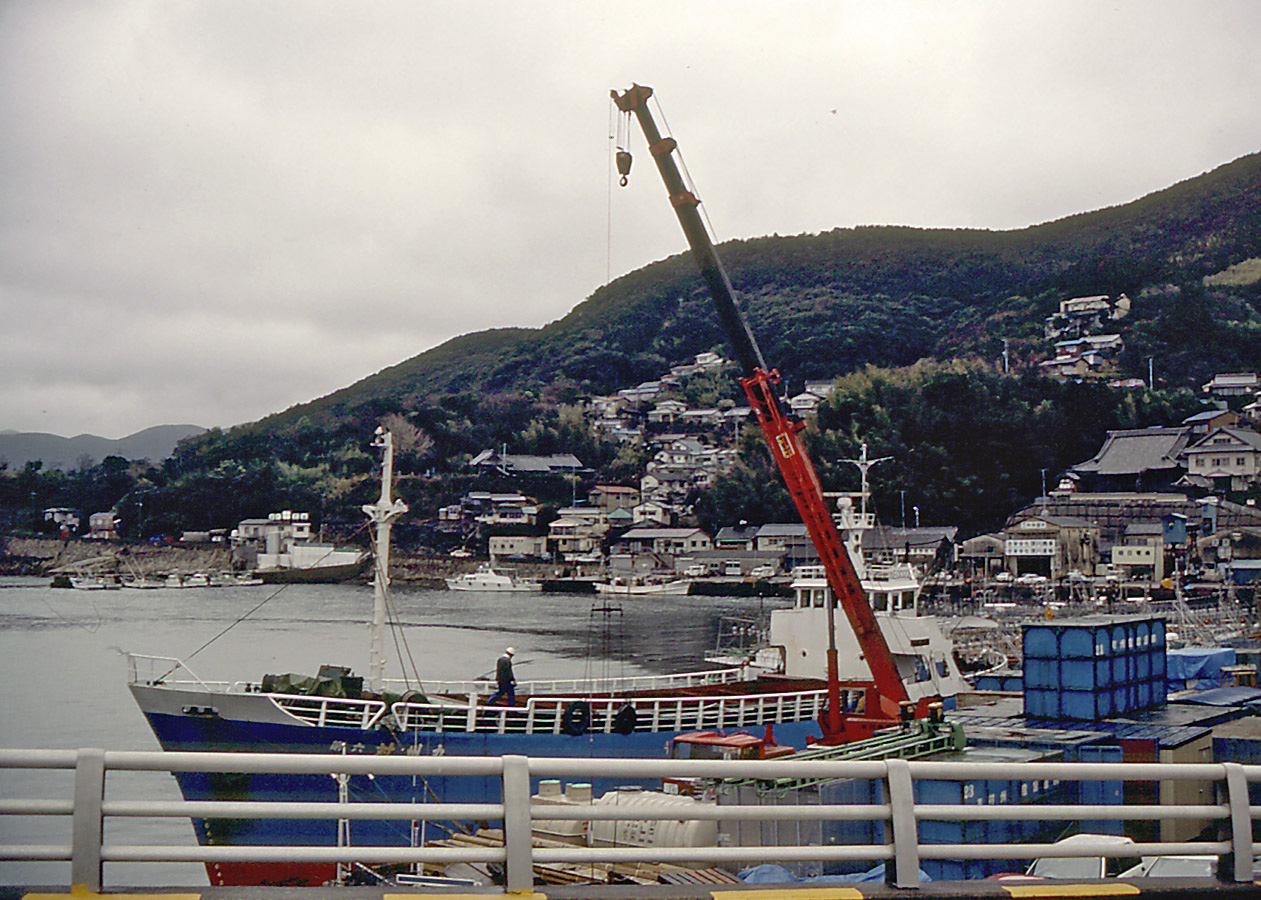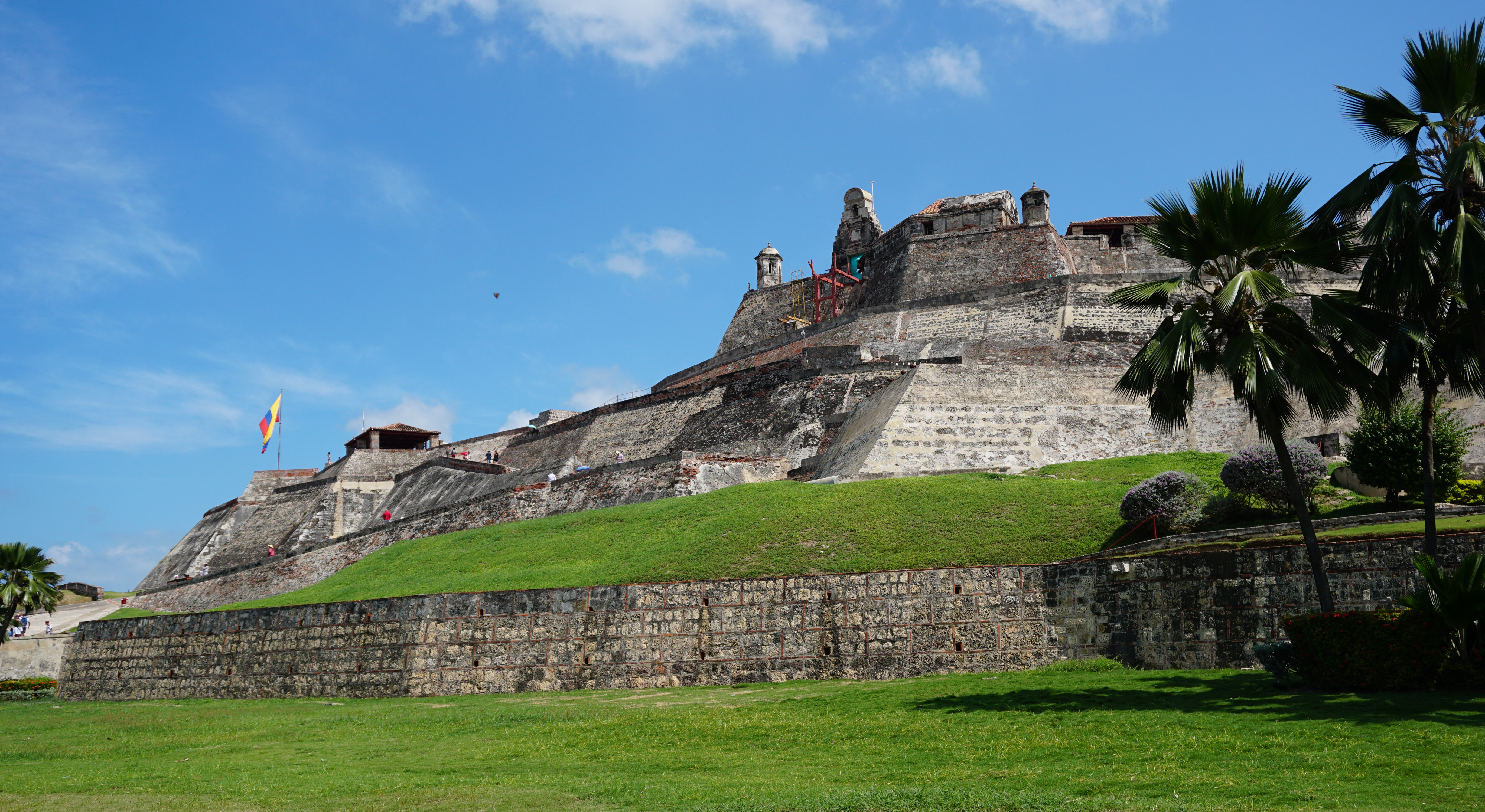|
Cheonseongjinseong
The Cheonseongjinseong is located on Gadeokdo Island, Gangseo-gu, Busan Metropolitan City, the Republic of Korea. Gadeokdo Island area was strategically important, being located at the end of the sea route from Tsushima Islands of Japan to Busan and Jinhae, and thus had been vulnerable to Japanese marauders from ancient times. After the riots of 1510 by the Japanese residents in the three southern ports which were open for trade with Japan, plans to construct a fortress to defend the area were seriously discussed. The need for a fortress came to be felt even more acutely after the Japanese aggression of Saryangjin in 1544. A breakwater was thus constructed to shelter naval vessels and a fortress was built to accommodate naval forces. It fell to the Japanese, however, during their invasions of 1592–98 and was repaired later. The remaining wall of the fortress is 960m in circumference, 4.5m in thickness and 3.5m in height. Gates reinforced with barbicans are located at the west ... [...More Info...] [...Related Items...] OR: [Wikipedia] [Google] [Baidu] |
Busan
Busan (), officially known as is South Korea's most populous city after Seoul, with a population of over 3.4 million inhabitants. Formerly romanized as Pusan, it is the economic, cultural and educational center of southeastern South Korea, with its port being Korea's busiest and the sixth-busiest in the world. The surrounding "Southeastern Maritime Industrial Region" (including Ulsan, South Gyeongsang, Daegu, and some of North Gyeongsang and South Jeolla) is South Korea's largest industrial area. The large volumes of port traffic and urban population in excess of 1 million make Busan a Large-Port metropolis using the Southampton System of Port-City classification . Busan is divided into 15 major administrative districts and a single county, together housing a population of approximately 3.6 million. The full metropolitan area, the Southeastern Maritime Industrial Region, has a population of approximately 8 million. The most densely built-up areas of the city are situat ... [...More Info...] [...Related Items...] OR: [Wikipedia] [Google] [Baidu] |
Gangseo-gu, Busan
Gangseo District (literally ''west of river district'') is a '' gu'' on the west side of Nakdong River in Busan, South Korea. It has an area of 179.05 km², and a population of about 66,000; it has a lower population density than Gijang county of Busan. Gangseo-gu was part of Buk-gu from its creation in 1978 to 1989 when it became an independent ''gu''. Gangseo-gu is the westernmost ''gu'' in Busan and it shares a common borders with Gimhae on its north-west side and Jinhae-gu, Changwon on its south-west side. Gangseo-gu is the birthplace of the Gaya civilization. Gimhae International Airport, Heungguk Temple, Myeongwol Temple, as well as the Eulsukdo bird sanctuary are located in Gangseo-gu. Administrative divisions Gangseo-gu is divided into 22 legal ''dong''. They have been grouped together to form only 7 administrative ''dong'', as follows: * Daejeo 1-dong * Daejeo 2-dong * Gangdong-dong * Myeongji 1-dong * Myeongji 2-dong * Garak-dong (4 legal ''dong'') **Jukr ... [...More Info...] [...Related Items...] OR: [Wikipedia] [Google] [Baidu] |
Republic Of Korea
South Korea, officially the Republic of Korea (ROK), is a country in East Asia, constituting the southern part of the Korean Peninsula and sharing a land border with North Korea. Its western border is formed by the Yellow Sea, while its eastern border is defined by the Sea of Japan. South Korea claims to be the sole legitimate government of the entire peninsula and adjacent islands. It has a population of 51.75 million, of which roughly half live in the Seoul Capital Area, the fourth most populous metropolitan area in the world. Other major cities include Incheon, Busan, and Daegu. The Korean Peninsula was inhabited as early as the Lower Paleolithic period. Its first kingdom was noted in Chinese records in the early 7th century BCE. Following the unification of the Three Kingdoms of Korea into Silla and Balhae in the late 7th century, Korea was ruled by the Goryeo dynasty (918–1392) and the Joseon dynasty (1392–1897). The succeeding Korean Empire (1897–1910) ... [...More Info...] [...Related Items...] OR: [Wikipedia] [Google] [Baidu] |
Joseon
Joseon (; ; Middle Korean: 됴ᇢ〯션〮 Dyǒw syéon or 됴ᇢ〯션〯 Dyǒw syěon), officially the Great Joseon (; ), was the last dynastic kingdom of Korea, lasting just over 500 years. It was founded by Yi Seong-gye in July 1392 and replaced by the Korean Empire in October 1897. The kingdom was founded following the aftermath of the overthrow of Goryeo in what is today the city of Kaesong. Early on, Korea was retitled and the capital was relocated to modern-day Seoul. The kingdom's northernmost borders were expanded to the natural boundaries at the rivers of Amrok and Tuman through the subjugation of the Jurchens. During its 500-year duration, Joseon encouraged the entrenchment of Confucian ideals and doctrines in Korean society. Neo-Confucianism was installed as the new state's ideology. Buddhism was accordingly discouraged, and occasionally the practitioners faced persecutions. Joseon consolidated its effective rule over the territory of current Korea and saw ... [...More Info...] [...Related Items...] OR: [Wikipedia] [Google] [Baidu] |
Gadeokdo
Gadeokdo is an island of Busan, South Korea. Gadeokdo is the largest island of Busan. It is connected to the mainland by the Gadeok Bridge and Nulchagyo Bridge. It is connected to Geojedo by the Busan-Geoje Fixed Link. The new airport is being built on the island to replace Gimhae International Airport Gimhae International Airport (), commonly known as Gimhae Airport (formerly Kimhae International Airport) is located on the western end of Busan, South Korea. The name "Gimhae" comes from the nearby city of Gimhae. It opened in 1976. A new int .... {{coord, 35, 0, 16.46, N, 128, 49, 49.31, E, type:island, display=title Islands of Busan Gangseo District, Busan ... [...More Info...] [...Related Items...] OR: [Wikipedia] [Google] [Baidu] |
Tsushima Island
is an island of the Japanese archipelago situated in-between the Tsushima Strait and Korea Strait, approximately halfway between Kyushu and the Korean Peninsula. The main island of Tsushima, once a single island, was divided into two in 1671 by the Ōfunakoshiseto canal and into three in 1900 by the Manzekiseto canal. These canals were driven through isthmuses in the center of the island, forming "North Tsushima Island" (Kamino-shima) and "South Tsushima Island" (Shimono-shima). Tsushima also incorporates over 100 smaller islands, many tiny. The name ''Tsushima'' generally refers to all the islands of the Tsushima archipelago collectively. Administratively, Tsushima Island is in Nagasaki Prefecture. The island group measures about by and had a population of about 34,000 . The main islands (that is, the "North" and "South" islands, and the thin island that connects them) are the largest coherent satellite island group of Nagasaki Prefecture and the eighth-largest in Japan. The ... [...More Info...] [...Related Items...] OR: [Wikipedia] [Google] [Baidu] |
Jinhae
Jinhae-gu (Hangul: 진해구, Hanja: 鎭海區) is a district in Changwon City, South Korea. This region is served by the Korean National Railroad, and is famous for its annual cherry blossom festival every spring. The city front is on a sheltered, island-studded bay, and is almost completely surrounded by mountains covered with pine trees. The emblem of Jinhae contains a cherry blossom. History Jinhae was developed as a naval base ( Chinkai Naval Station) of the Imperial Japanese Navy during the Japanese occupation period in the early 20th century. On July 1, 2010, Jinhae and its neighboring cities, Changwon and Masan, merged to form the city of Changwon, currently the seat of the Provincial Council of South Gyeongsang Province. Economy The city's economy is primarily dependent on the Republic of Korea Navy personnel and their families or employees of the ROKN shipyard and base facilities. Today, Jinhae hosts major naval facilities and commands of the South Korean navy ... [...More Info...] [...Related Items...] OR: [Wikipedia] [Google] [Baidu] |
Forts In South Korea
A fortification is a military construction or building designed for the defense of territories in warfare, and is also used to establish rule in a region during peacetime. The term is derived from Latin ''fortis'' ("strong") and ''facere'' ("to make"). From very early history to modern times, defensive walls have often been necessary for cities to survive in an ever-changing world of invasion and conquest. Some settlements in the Indus Valley civilization were the first small cities to be fortified. In ancient Greece, large stone walls had been built in Mycenaean Greece, such as the ancient site of Mycenae (famous for the huge stone blocks of its ' cyclopean' walls). A Greek '' phrourion'' was a fortified collection of buildings used as a military garrison, and is the equivalent of the Roman castellum or English fortress. These constructions mainly served the purpose of a watch tower, to guard certain roads, passes, and borders. Though smaller than a real fortress, they ... [...More Info...] [...Related Items...] OR: [Wikipedia] [Google] [Baidu] |
Gangseo District, Busan
Gangseo District (literally ''west of river district'') is a '' gu'' on the west side of Nakdong River in Busan, South Korea. It has an area of 179.05 km², and a population of about 66,000; it has a lower population density than Gijang county of Busan. Gangseo-gu was part of Buk-gu from its creation in 1978 to 1989 when it became an independent ''gu''. Gangseo-gu is the westernmost ''gu'' in Busan and it shares a common borders with Gimhae on its north-west side and Jinhae-gu, Changwon on its south-west side. Gangseo-gu is the birthplace of the Gaya civilization. Gimhae International Airport, Heungguk Temple, Myeongwol Temple, as well as the Eulsukdo bird sanctuary are located in Gangseo-gu. Administrative divisions Gangseo-gu is divided into 22 legal ''dong''. They have been grouped together to form only 7 administrative ''dong'', as follows: * Daejeo 1-dong * Daejeo 2-dong * Gangdong-dong * Myeongji 1-dong * Myeongji 2-dong *Garak-dong (4 legal ''dong'') **Jukrim ... [...More Info...] [...Related Items...] OR: [Wikipedia] [Google] [Baidu] |




_north.jpg)